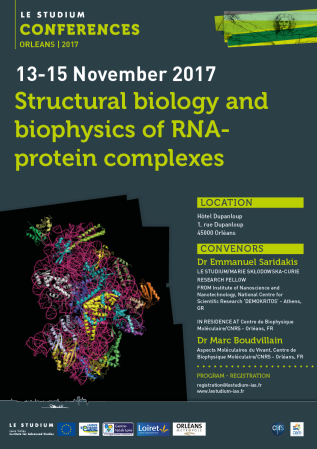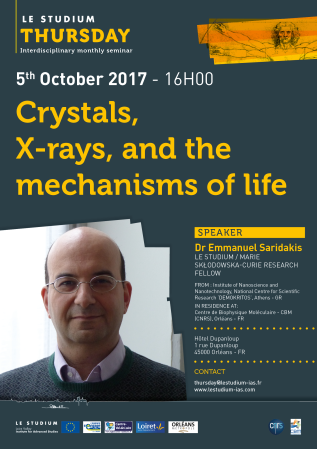Dr Emmanuel Saridakis

From
Institute of Nanoscience and Nanotechnology N.C.S.R. "DEMOKRITOS" - GR
In residence at
Center for Molecular Biophysics (CBM) / CNRS - FR
Host scientist
Dr Marc Boudvillain
PROJECT
New crystallization strategies for structure-guided pharmacological development – large biological assemblies for rna metabolism
The elucidation of three-dimensional structures of molecular machines that control cellular physiology is necessary for the understanding of the mechanisms of life and for the development of rational screening tests for pharmaceutical applications. Due to the large size of these biological entities and the high resolution which is sought, X-ray crystallographic structure determination is the method of choice. Obtaining crystals of biological complexes however remains often difficult and is the bottleneck to this method. In this project, we will explore new crystallisation strategies and their capacity to be automated with an aim to enhance the likelihood and speed of obtaining crystals of sufficient quality for structure determination. We will apply these strategies to the specially difficult case of complex molecular motors involved in RNA metabolism, some of which are pharmacological targets of great interest. This project has wide application potential for academia (discovery of new biological operating mechanisms), technology (new crystallisation kits) and pharmaceutics (targetted virtual screening).
Publications
The bacterial Rho factor is a ring-shaped motor triggering genome-wide transcription termination and R-loop dissociation. Rho is essential in many species, including in Mycobacterium tuberculosis where rho gene inactivation leads to rapid death. Yet, the M. tuberculosis Rho [MtbRho] factor displays poor NTPase and helicase activities, and resistance to the natural Rho inhibitor bicyclomycin [BCM] that remain unexplained. To address these issues, we solved the cryo-EM structure of MtbRho at 3.3 Å resolution. The MtbRho hexamer is poised into a pre-catalytic, open-ring state wherein specific contacts stabilize ATP in intersubunit ATPase pockets, thereby explaining the cofactor preference of MtbRho. We reveal a leucine-to-methionine substitution that creates a steric bulk in BCM binding cavities near the positions of ATP γ-phosphates, and confers resistance to BCM at the expense of motor efficiency. Our work contributes to explain the unusual features of MtbRho and provides a framework for future antibiotic development.


